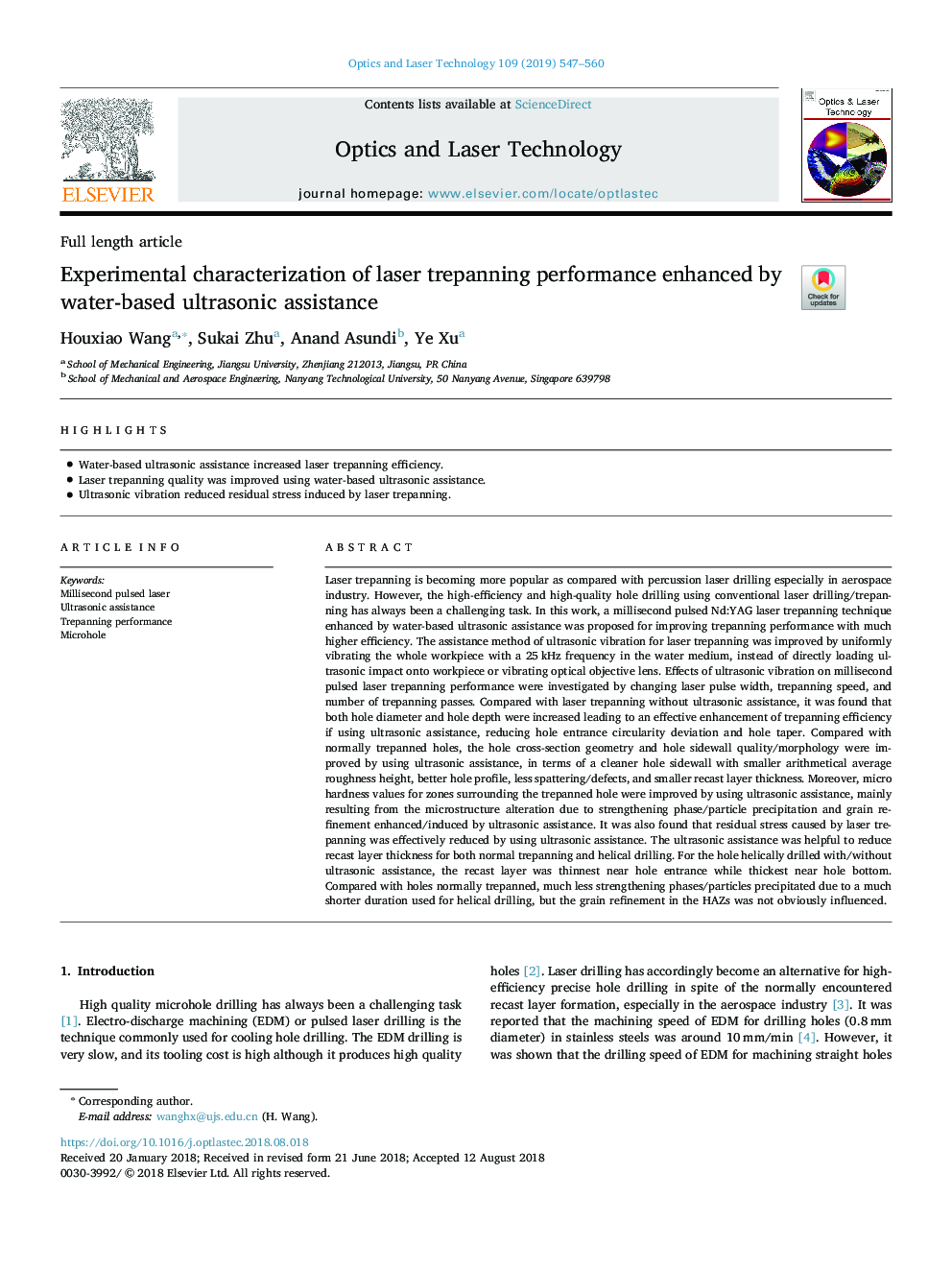| Article ID | Journal | Published Year | Pages | File Type |
|---|---|---|---|---|
| 11003669 | Optics & Laser Technology | 2019 | 14 Pages |
Abstract
Laser trepanning is becoming more popular as compared with percussion laser drilling especially in aerospace industry. However, the high-efficiency and high-quality hole drilling using conventional laser drilling/trepanning has always been a challenging task. In this work, a millisecond pulsed Nd:YAG laser trepanning technique enhanced by water-based ultrasonic assistance was proposed for improving trepanning performance with much higher efficiency. The assistance method of ultrasonic vibration for laser trepanning was improved by uniformly vibrating the whole workpiece with a 25â¯kHz frequency in the water medium, instead of directly loading ultrasonic impact onto workpiece or vibrating optical objective lens. Effects of ultrasonic vibration on millisecond pulsed laser trepanning performance were investigated by changing laser pulse width, trepanning speed, and number of trepanning passes. Compared with laser trepanning without ultrasonic assistance, it was found that both hole diameter and hole depth were increased leading to an effective enhancement of trepanning efficiency if using ultrasonic assistance, reducing hole entrance circularity deviation and hole taper. Compared with normally trepanned holes, the hole cross-section geometry and hole sidewall quality/morphology were improved by using ultrasonic assistance, in terms of a cleaner hole sidewall with smaller arithmetical average roughness height, better hole profile, less spattering/defects, and smaller recast layer thickness. Moreover, micro hardness values for zones surrounding the trepanned hole were improved by using ultrasonic assistance, mainly resulting from the microstructure alteration due to strengthening phase/particle precipitation and grain refinement enhanced/induced by ultrasonic assistance. It was also found that residual stress caused by laser trepanning was effectively reduced by using ultrasonic assistance. The ultrasonic assistance was helpful to reduce recast layer thickness for both normal trepanning and helical drilling. For the hole helically drilled with/without ultrasonic assistance, the recast layer was thinnest near hole entrance while thickest near hole bottom. Compared with holes normally trepanned, much less strengthening phases/particles precipitated due to a much shorter duration used for helical drilling, but the grain refinement in the HAZs was not obviously influenced.
Keywords
Related Topics
Physical Sciences and Engineering
Engineering
Electrical and Electronic Engineering
Authors
Houxiao Wang, Sukai Zhu, Anand Asundi, Ye Xu,
